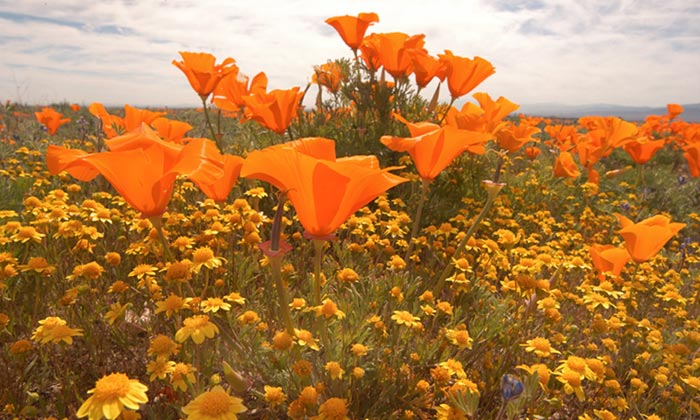
© 2011 Robert Hitchman. All Rights Reserved.
Goldfields and Poppies
Nikon D300s|15mm lens|1/250 sec. at f/18
East of Gorman, and west of Lancaster, the Antelope Valley California Poppy Reserve is located on the western edge of the Mojave desert and just inside the northern boundary of Los Angeles County. From a distance, the low hills rising from the center of this reserve are a colorful landmark. This eighteen-hundred-acre reserve was opened in 1982 to protect some of the most outstanding displays of the California Poppy, Eschscholtzia californica, the state flower. In the 1800s, great fields of poppies grew wild, all over the state. The only large fields left in California are found here, in the western end of the Antelope Valley.
The Poppy Reserve’s entrance is off Avenue I, which becomes Lancaster Blvd., as it skirts the south side of the reserve. The Antelope Valley California Poppy Reserve opens at sunrise and closes at sunset. During the peak of spring color, on a weekend with good weather, the parking lot fills in the morning and a line of cars forms. A fee per vehicle is collected at the gate.
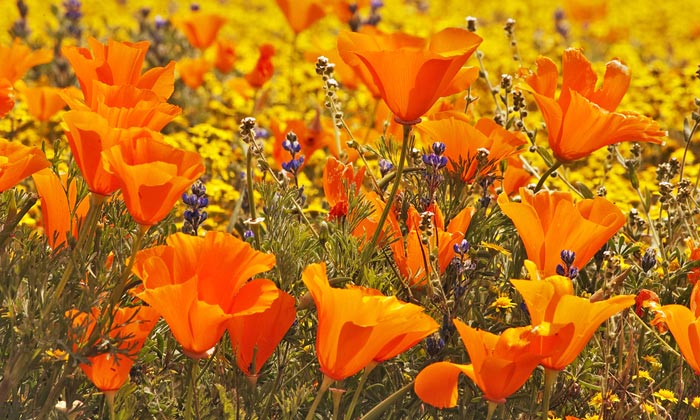
© 2011 Robert Hitchman. All Rights Reserved.
Poppies and Lupine
Nikon D300s|15mm lens|1/160 sec. at f/16
There are five loop trails leading from the reserve’s parking lot, for a total of seven miles, including a paved section for wheelchairs. Some of the foot trails are fairly level and easy to walk and some are longer, steeper, and more strenuous, with a loose gravel surface. None are difficult.
My favorite, the North Trail, heads north from the Visitor Center, then crosses a bridge over a small stream into a flat basin where this spring, solid yellow goldfields covered everything. The trail continues westerly, along the reserve’s north boundary then heads south and returns to the Visitor Center. The southern part of this two-mile-long loop trail is called the South Trail. It’s actually one long loop. It can be walked in thirty minutes. If the weather and wind conditions are good, plan to stay out there for a half-day.
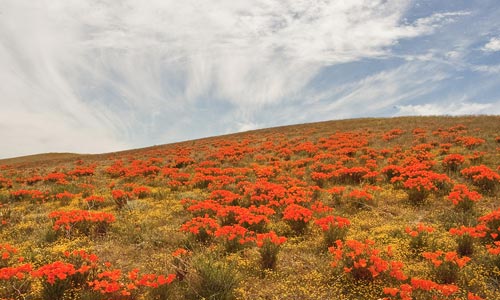
© 2011 Robert Hitchman. All Rights Reserved.
Field of Poppies
Nikon D300s|15mm lens|1/500 sec. at f/16
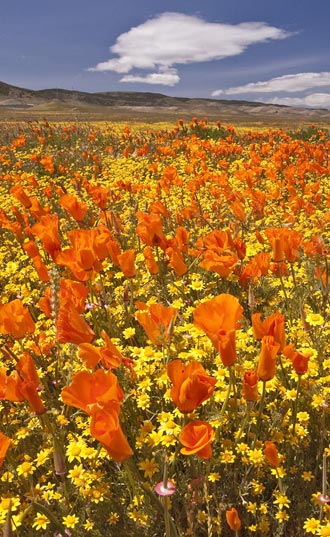
© 2011 Robert Hitchman. All Rights Reserved.
Poppies and Goldfields
Nikon D300s|24mm lens
1/50 sec. at f/22
If you are concentrating on close-ups or are shooting large-format images, the abstract blurs of wind-whipped wildflowers won’t cut it. Close-ups are out when the petals are whipping in the breeze. Early morning photo sessions can be productive. Mornings are calm, with little or no wind, and the low, warm light from a rising sun can be dramatic. Poppies fold up tight when temperatures drop and remain closed until the sun rises high enough in the sky to warm and open the petals. You may just have to be patient and wait for them to open.
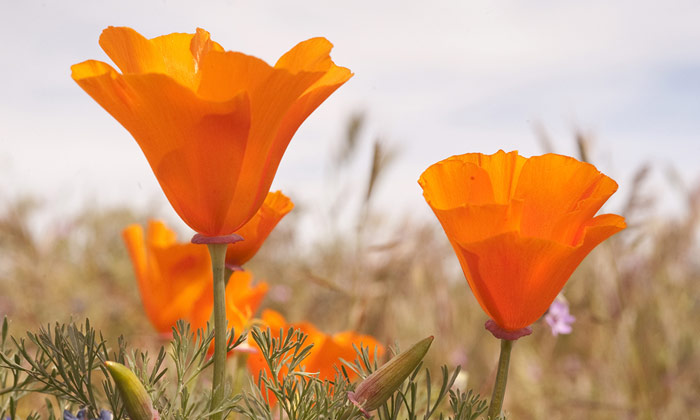
© 2011 Robert Hitchman. All rights reserved.
Poppies Up Close
Nikon D300s|105 macro lens|1/250 sec. at f/22
My favorite windbreak is created from three 18”x 28” Masonite® panels that are painted white on both sides. The panels are connected with folding hinges made of white Scotch® Colored Plastic Tape on the long dimensions. The three, connected, 1/4” thick panels are heavy enough to stand alone in the wind.
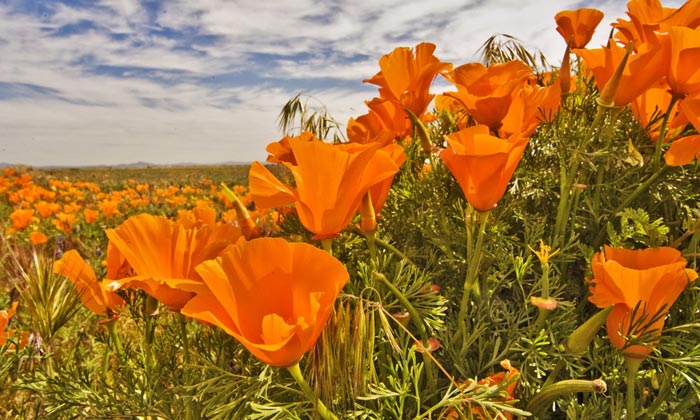
© 2011 Robert Hitchman. All rights reserved.
California Poppies
Nikon D300s|15mm lens|1/250 sec. at f/18
Pack a folding beach chair to use when waiting for the wind to stop. It’s more comfortable than kneeling on the ground and you can’t feel a change in the wind if you are waiting in your car. Bring layers of clothing. The desert temperatures can change suddenly and drastically during the day. I also pack sunscreen, a hat, and gloves for crawling around on the ground. I use the small pair of scissors in my Swiss Army knife for snipping off dead leaves and stray blades of grass, which will always be more noticeable in your finished photograph.
This is one area of California you won’t want to miss.
by Robert Hitchman, Photograph America

Leave a Reply